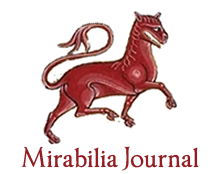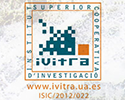Can Virtues be taught in Medicine? Aristotle’s Virtue Theory and Medical Education and Clinical Practice
SHAH, Niloy; MARCUM, James A.
Original title: As Virtudes podem ser ensinadas em Medicina? Teoria Aristotélica das Virtudes, Educação Médica e Prática Clínica
Published in
Keywords: Aristotle, Clinical practice, Medical Education, Virtues.
In a complex and technologically sophisticated healthcare system, the utilization of virtues, which emphasizes the art of clinical practice, is often eclipsed by the technical science of its practice. Consequently, the training of physicians generally focuses on the objective and quantifiable science of clinical practice, which at times cripples the patient-physician relationship. To counter this impact on the patient-physician relationship, medical educators are developing pedagogical strategies to teach virtues to medical students and residents. But, can virtues be taught in medical school or in the clinic? To address this question, we explore how Aristotelian virtue theory can be integrated into the medical education experience, which leads to the formation of virtuous physicians. We then conclude by discussing issues surrounding the incorporation of virtues into the medical curriculum.
Carpenters and cabinetmakers of the Monastery of San Lorenzo El Real in El Escorial
Manuel José GARCÍA SANGUINO
Original title: Los carpinteros y ebanistas del Monasterio de San Lorenzo El Real de El Escorial
Published in
Keywords: Cabinetmakers, Carpenters, El Escorial, Manierism, Philip II, Royal Monastery.
The iconic work of Philip II (Valladolid, May 21, 1527-San Lorenzo de El Escorial, September 13, 1598) was the Royal Monastery of St. Lawrence de El Escorial (1563-1584). Such a featured work was built in collaboration with various skilled journeymen: stonecutters, masons, slatecutters and, of course, carpenters and cabinetmakers. Many were those who got their hands on such a great artwork. The carpenters were devoted to the development of doors, windows, painting doors and windows, roof trusses and spiers and construction of cranes and scaffolding, using current timber. Cabinetmakers, meanwhile, left their mark on the making of furniture comprising the main rooms of the monastery and marquetry doors, using for making them the so called fine woods, harder, more consistent and of great aesthetic beauty. Carpenters and cabinetmakers worked under the orders of Father Villacastín, the greater worker of the Monastery, a person aware of the progress of the working process, dealing with the construction of the building, work schedules, supplying materials and all administrative task, ie, the foreman. They worked also under the orders of architect Juan de Herrera and carpentry foreman García de Quesada. In addition, we must take into account the figures of García de Brizuela, an accountant and supervisor in the first phase, and Gonzalo Ramirez in the second one, with whom works contracts were signed and companies were formed.
Castrated children: the beginning of a vocal practice in Iberian Peninsula
Kristina AUGUSTIN
Original title: Niños caponados: o início de uma prática vocal de origem ibérica
Published in Medieval and Early Modern Iberian Peninsula Cultural History
Keywords: Capon, Castrati, Castration, Early Music, Vocal practice.
This article is intended to address and clarify some issues about the castrati, the chronological question about the beginning of the practice of castration with musical objective in Europe as well as the existing migration particularly between Spain and Italy in the first half of the sixteenth Century.
Commercial networks between the Byzantine Empire and Europe, including the British Isles
Elena Ene DRAGHICI-VASILESCU
Published in The World of Tradition
Keywords: Byzantine Empire, Commercial networks.
In the literature concerning Byzantium usually the historical phenomena are analysed as they took place along the Eastern-Western axis of its territory. What my paper proposes is an alternative to this approach. Because of the need to circulate goods between the Mediterranean and the North Sea, roads were constructed to connect the two, and along these both merchandises (textiles, metal objects, etc.) and cultural items as manuscripts, ivory for book covers, pigments for painting, etc. were transported. The same thoroughfares and points of connection within a large network were used for religious purposes and by the military. I adduce testimonies to make a strong argument that the division ‘North-South’ within the Empire was as important as that ‘East-West’.
Compassion – The Lost Pearl of Healthcare
CRUZ, Jorge
Original title: Compaixão – A pérola perdida dos cuidados de saúde
Published in
Keywords: Compassion, Doctor-patient relationship., Edmund D. Pellegrino, Virtue ethics.
Compassion is on the list of virtues that many bioethicists consider indispensable for the provision of more humanized health care and taking into account the best interest of patients. After an introduction of the theory of virtue ethics and its importance to bioethics and healthcare, we will present the etymological and semantic meaning of the virtue of compassion, particularly from the perspective of Edmund D. Pellegrino and David C. Thomasma. Since, in our opinion, bioethical reflection only makes sense if it is relevant or could be applied to everyday clinical practice, we will present some practical examples involving the virtue of compassion especially in the doctor-patient relationship.
Conjunctions and prepositions in the 16th century. Uses in a Mallorcan math book
Joan-Antoni MESQUIDA CANTALLOPS
Original title: Conjuncions i preposicions al segle XVI. Usos en un tractat d'aritmètica mallorquí
Published in
Keywords: 16th century, Arithmetic, Catalan language, Conjunctions, Prepositions.
In this article, we study the conjunctions and prepositions that appear in Joan Ventallol’s Pràtica mercantívol, which was published in Lyon in 1521. This text, which was initially released in Catalan and later translated into Spanish in Tarragona (1619), enables us to study the language that was used for non-aesthetic purposes within the field of applied mathematics. Alongside our classification of the conjunctions and study of their main uses, we analyse the unstressed prepositions of the Catalan language a/en, de/amb, per/per a and we catalogue the stressed prepositions that we have observed in the above-mentioned publication. These connections contribute to our general knowledge of the use of the Catalan language for non-literary purposes during the 16th.
Considerations about Liber Contemplationis in Deum
Matilde CONDE SALAZAR, Carmen Teresa PABÓN DE ACUÑA
Original title: Consideraciones en torno al Liber Contemplationis in Deum
Published in Ramon Llull. Seventh centenary
Keywords: Faith, God, Hope, Infidels, Liber Contemplationis in Deum, Mercy, Parallel schemes, Repentance.
The aim of this brief study is to offer some characteristics that have caught our attention in the very broad “Liber contemplationis in Deum”. These aspects are, from a formal point of view, the use of schemes, generally in the form of very carefully designed parallel patterns throughout the Liber; the overwhelming passion that is reflected in the wealth and variety of adjectives that invoke God; and above all, and underlying all the text, the continuous manifestation of Llull’s deep regret and repentance as a sinner, the need to share his faith with infidels and the song of hope and trust in the mercy and pity of God, which marks the culminating points of each chapter.
Considerations around the translation of the Chronicle of Jaume I into Arabic language
Mostapha JARMOUNI JARMOUNI
Original title: Considérations autour de la traduction de la Chronique de Jaume I à l’arabe
Published in
Keywords: Chronique de Jaume I, Chroniques catalanes médiévales, Llibre dels Feyts, Terminologie catalane médiévale, Traduction de l’arabe, Traductologie.
Explication du processus de traduction du catalan à l'arabe de la Chronique de Jaume I, ou Llibre dels Feyts. Une attention particulière est donnée à certains termes polysémiques ou de difficile traduction; ils sont répertoriés et on explique comment ils ont été traduits.
Considerations on Nicholas of Cusa’s De genesi. Thinking beyond the coincidentia oppositorum in light of the enigmatic name “idem”
José GONZÁLEZ RÍOS
Original title: Consideraciones en torno al De genesi de Nicolás de Cusa. Pensar más allá de la coincidentia oppositorum a la luz del nombre enigmático “idem”
Published in Nicholas of Cusa in Dialogue
Keywords: De genesi, Nicholas of Cusa, Thinking beyond the coincidentia oppositorum, “Idem”.
In De docta ignorantia (1440), Nicholas of Cusa presents the first comprehensive formulation of his system of thought. In De coniecturis, which he began writing at the time, he not only completes the anthropology and theory of knowledge, which he suggested in De docta ignorantia, but also presents the proposal of thinking the divine beyond thecoincidentia oppositorum. In the following years, he writes a group of opuscula in which he revists the topics treated in his previous works. Notorious amongst them is the dialog De genesi (1447). In it, Cusanus speculates on one of the most cherished subjects of his investigation, i.e. the relationship between the one and the multiple, by means of a new aenigmatic name: “idem”. Our work seeks to show that Nicholas of Cusa conjectures about that problem –in terms of identity and difference– in taking up his proposal of thinking the absolute beyond the coincidentia oppositorum.
Coronavirus, Black Swans and Gray Rhinos
Joandomènec ROS
Original title: El coronavirus, els cignes negres i els rinoceronts grisos
Published in War and Disease in Antiquity and the Middle Ages






















































































